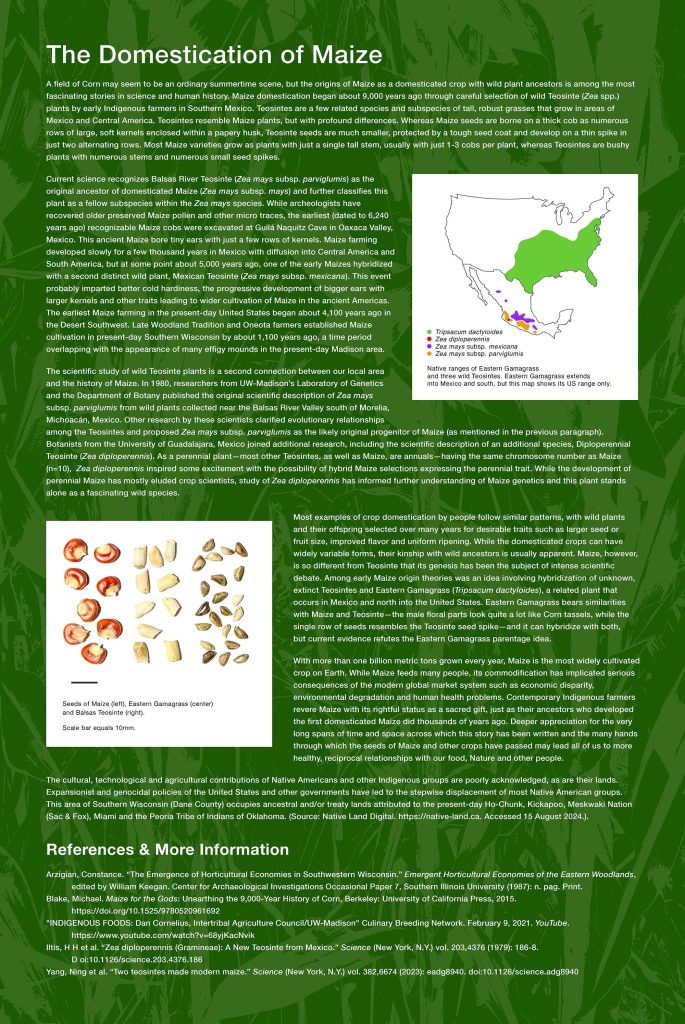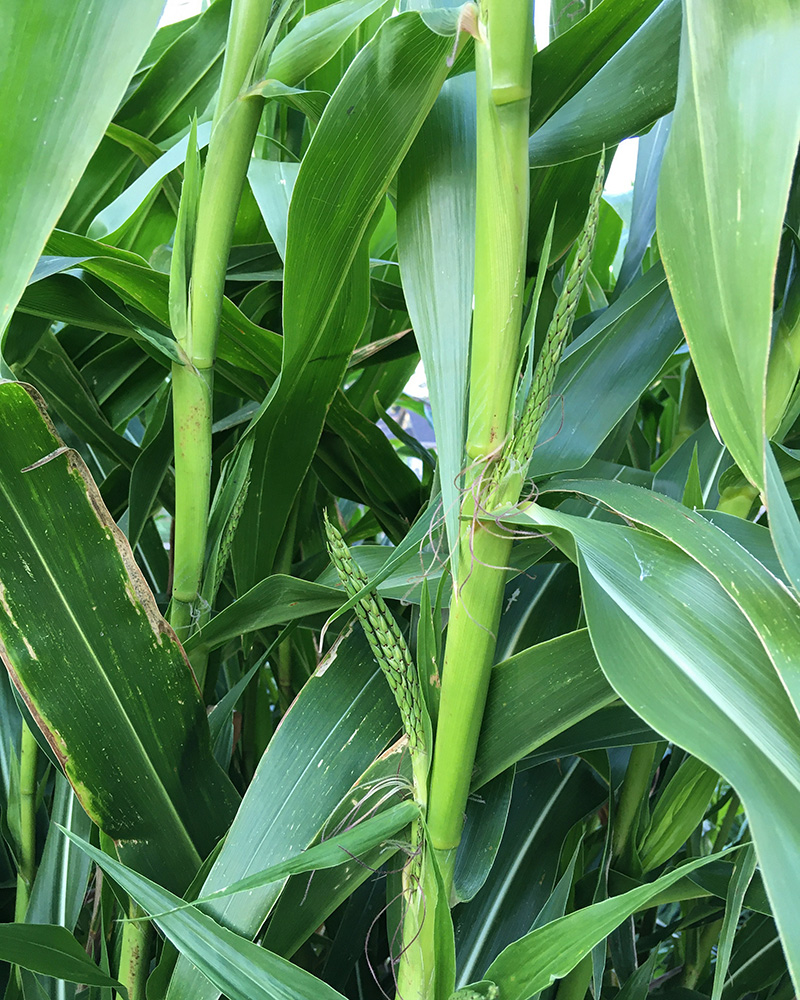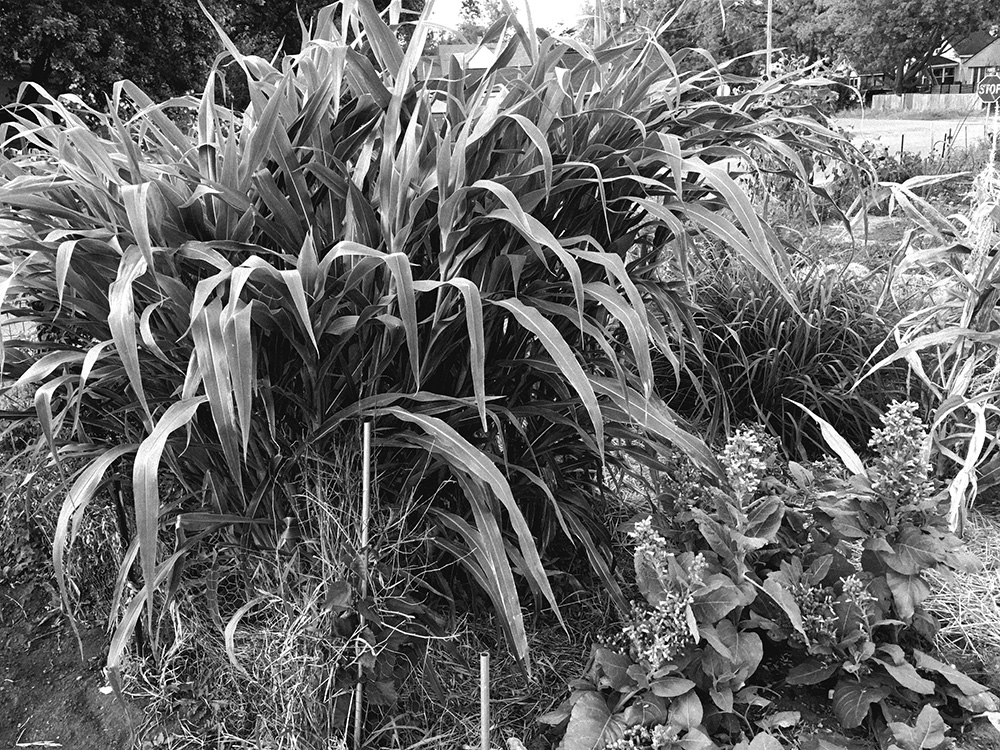Maize (Zea mays ssp. mays), the most widely cultivated crop on Earth, has a fascinating history that began thousands of years ago with its early transformation from wild Balsas Teosinte (Zea mays ssp. parviglumis) plants in Southern Mexico by early Indigenous farmers. This educational project follows a format using a themed planting in an urban community garden plot along with signage text and laser-engraved Cedar plant labels. Content is presented mainly with reference to archeological science and is intended to inspire greater appreciation for this story’s long spans of time and countless connections between people, plants and landscapes. During this season (summer 2024) two fast-maturing Maize varieties grew in the garden along with tall, imposing Balsas Teosinte plants and the related North American species, Eastern Gamagrass (Tripsacum dactyloides). Additional selections with their own histories of domestication or use as wild plants include Punche Mexicano (Nicotiana rustica), Hopniss (Apios americana) and Buffalo Gourd (Cucurbita foetidissima).
Signs were built with a modest budget and plants were selected for their interpretive value and ease of care. With reused content and sharing of live propagation material, this project may be repeated in other community garden plots or similar settings.





